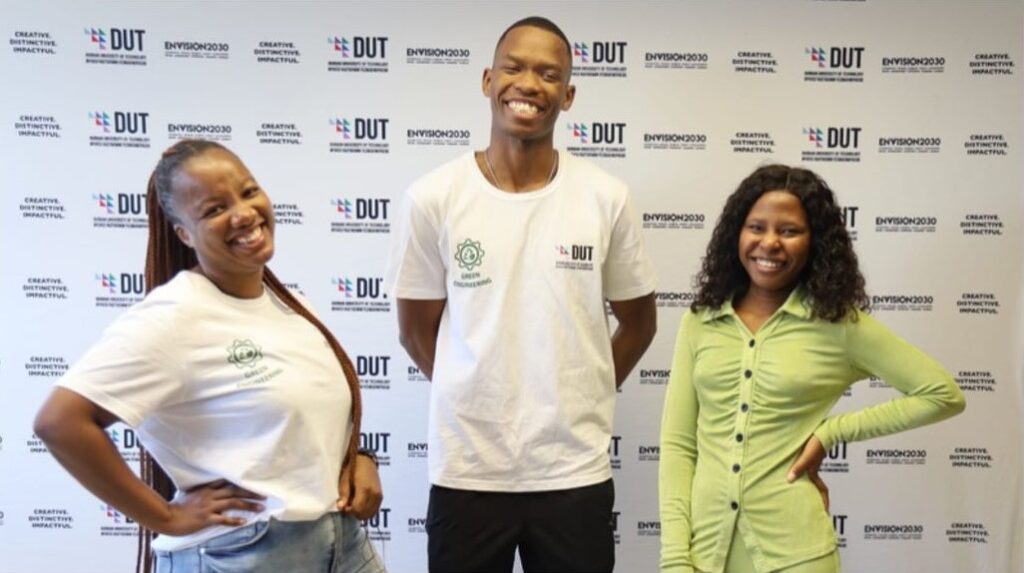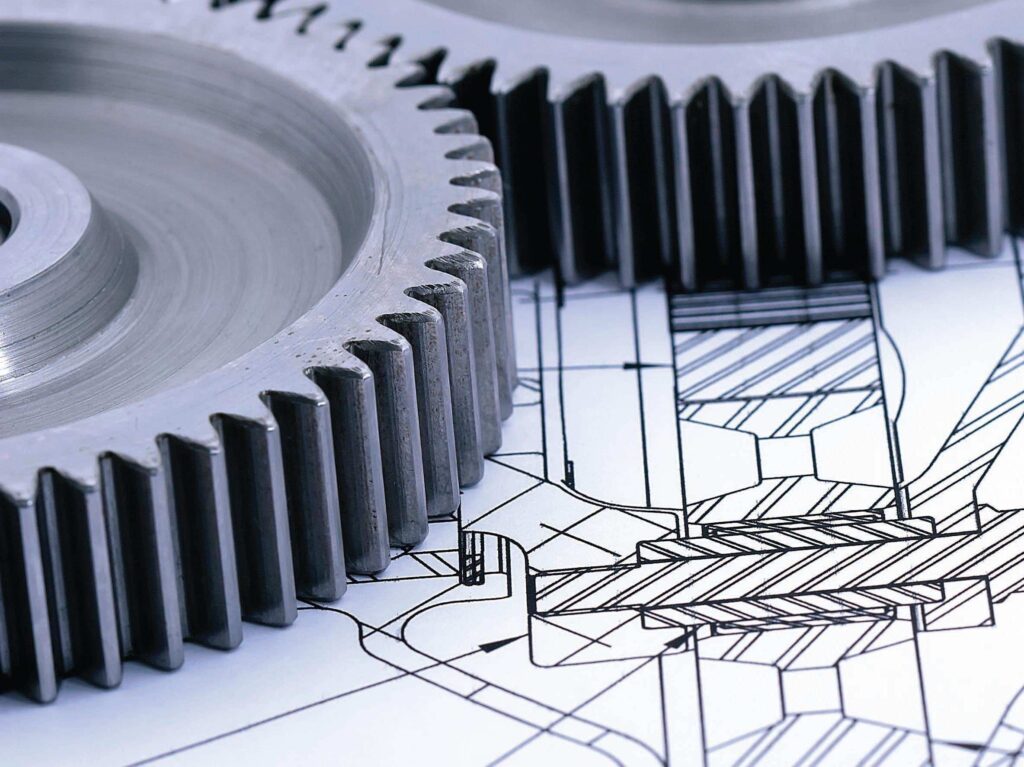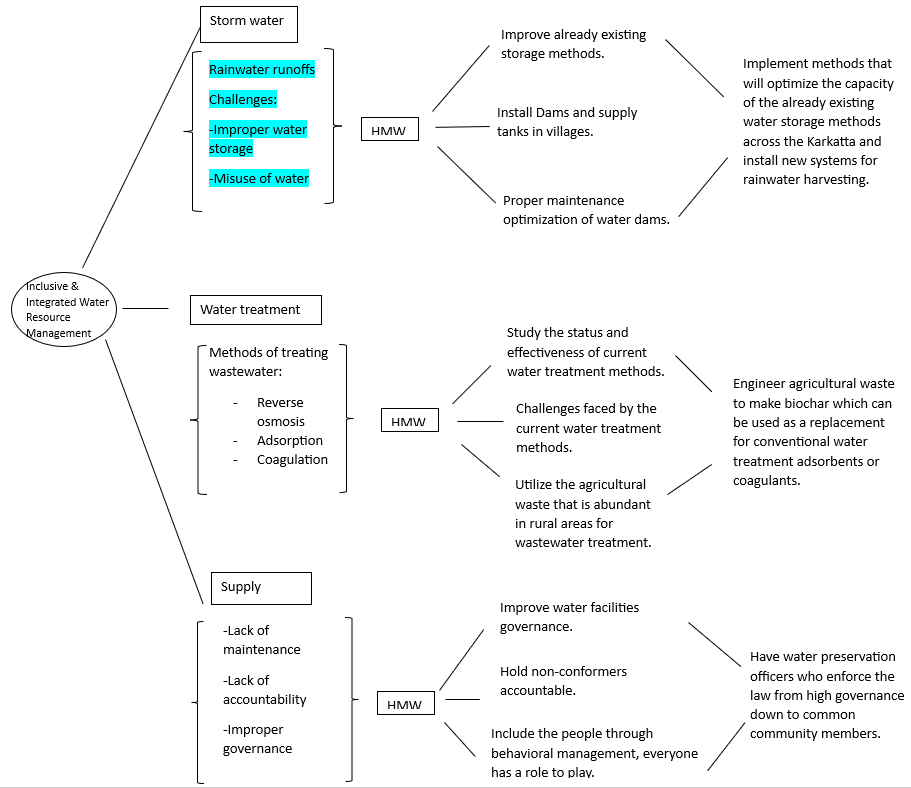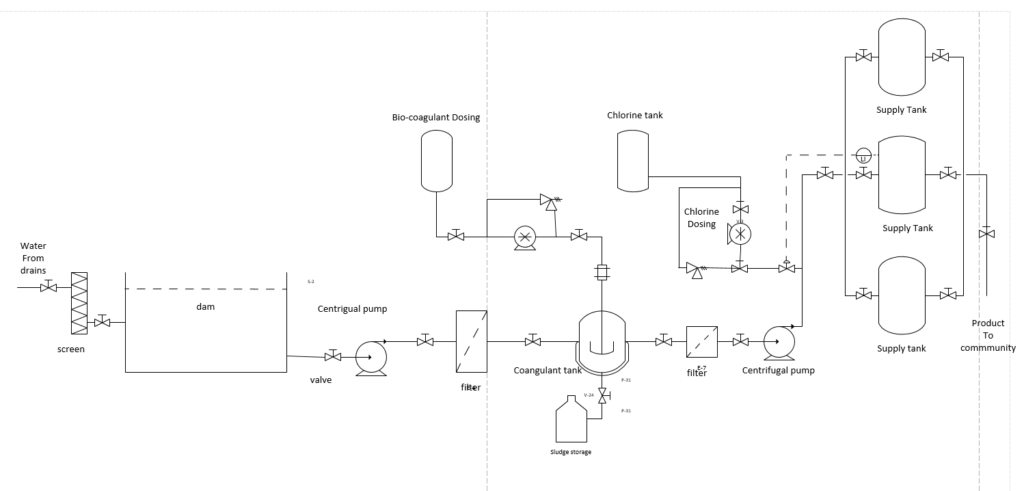Challenge 1: Inclusive and integrated water resource management
Hydro-integrators
How can we develop to utilize water systems as multifunctional spaces that support recreational activities or promote inclusive communities while acting as effective water resource mangement systems – especially in rural areas.
Our Challenge


We are a team of the Durban University of Technology students our institution is based in KwaZulu Natal, South Africa. We come from different backgrounds. Londiwe Ngomane (team leader) is from Faribreeze, Tongaat and she is currently enrolled for her Master’s degree in Chemical Engineering. Sinovuyo Kraai who is from KwaLunda, Matatiele is also doing his Master’s degree in Chemical Engineering. Siyasanda Xaba who is from L-section, Umlazi is currently doing here Advanced Diploma in Electical Power Engineering. Though, we may come from different backgrounds in terms of where we grew up, and in terms of our studies. However, we manage to find strength in each others weaknesses.
Our challenge is on Inclusive and integrated water research management focused on a small village in India called Karkatter which is in the Gharwa district under Jarkhand state. This village is faced with a challenge of high rainfalls during their monsoons which sometimes cause floods (Deepak et al. 2021). And then later experiences extremely drought during their dry season. The community needs approximately 13 000 cubic meters of water during their drought season. Annually it receives approximately a rainfall of 1100 mm, and its area is about 720 000 cubic meters. This translate to an annual rainfall that is around 790 000 cubic meters, however, only roughly 24% (Deepak et al. 2021) of this volume can be captured as runoffs. Meaning roughly only 189 600 cubic meters can be captured for storage and later use. To avoid using too much of the land which is predominantly used for agriculture, the dams will be distributed to three subareas which will each have a volume of 32 000 cubic meters. The solution is not only focused on supplying water to the community but also involves us working with young academics in the area who will be part of this project. Rainwater harvesting will be implemented used as or solution where we will build channels from homes and areas cause rainwater to be stagnant which in turn causes flooding. These channels will be directed to a storage check dam, which will keep the water during dry season. Using degradable, biowaste materials this water will be treated in a coagulation tank prior to being supplied to the community.
How Might We Ideology

Solution

Above is the process and instrumentation process of the water collection and treatment plant. The rainwater runoffs will be collected during the rainfall season and this will be followed by filtration to remove large particles in the water before entering the dam which will have a volume of 32 000 cubic meter. The dam will be covered with a net to account for the evaporation rate during the summer season. Since the water will be stored for a period of about 6 to 8 months, treatment of the water will be required before it is supplied to the communities. A more sustainable alternative is investigated and used in the form of bio-waste materials. After treatment in a vessel called the coagulation the sludge that will settle in the bottom will be removed to be later used as fertilizer. The clean water will be dosed with chlorine and distributed to the community.

The schematic diagram is shown above which shows the above which demonstrates a 3D illustration of our solution.

Above is the laboratory test of our bio-waste material which was used in the coagulation process to treat the water.
